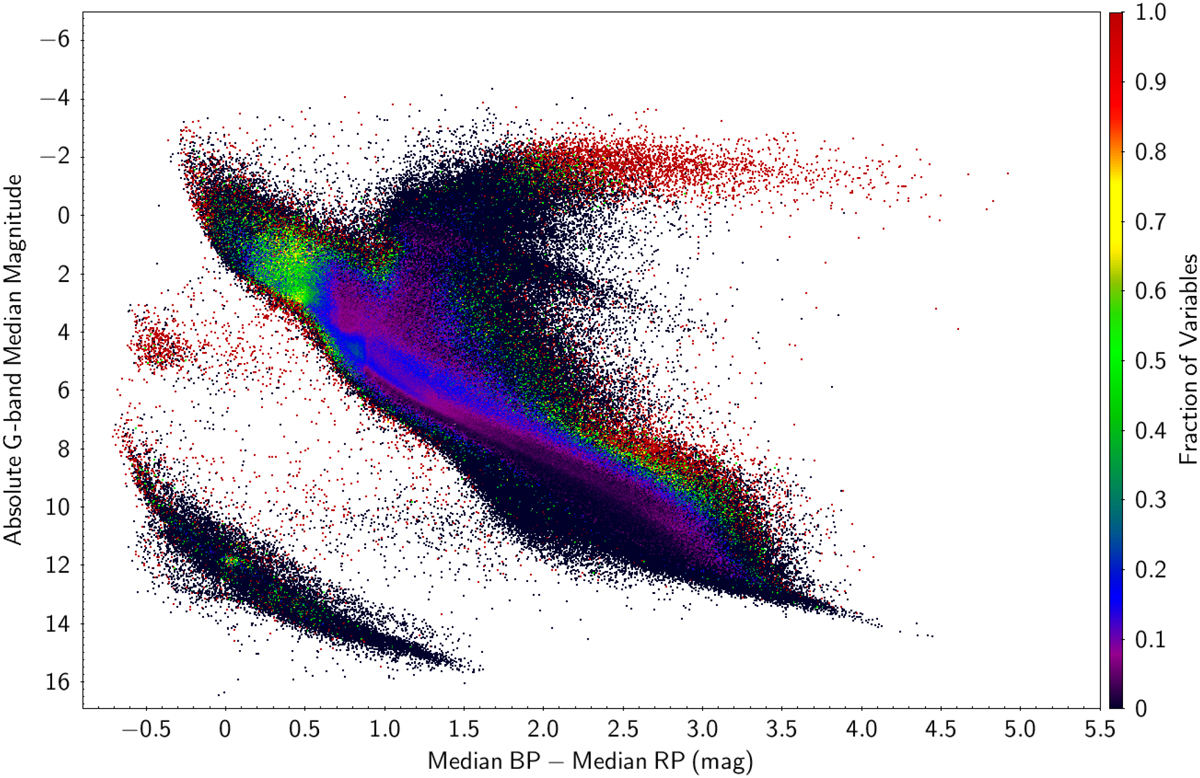Fig. 8

Variable object fraction in the CaMD shown as a colour scale as labelled. This figure is not based on variable objects from the literature. Instead, variability is detected directly using Gaia data and employing supervised classification for sources with at least 20 observations in the G, GBP, and GRP bands. All objects satisfy the selection criteria described in Appendix B, but with more restrictive constraints on the parallax precision (parallax_over_error > 20) and on the parallax value (ϖ > 1 mas), which limits the sample (size, extinction, and reddening). In order to reduce the extinction effect, objects at low Galactic latitudes (from −5° to 5°) are excluded. About 9% of the 13.5 million stars that satisfy these criteria are variable. Some of the bins (especially the outlying ones) can contain only a few or even single sources. The condition on the relative precision of GBP measurements introduces artificial cuts in the distributions of low-mass main-sequence stars and red (super)giants.
Current usage metrics show cumulative count of Article Views (full-text article views including HTML views, PDF and ePub downloads, according to the available data) and Abstracts Views on Vision4Press platform.
Data correspond to usage on the plateform after 2015. The current usage metrics is available 48-96 hours after online publication and is updated daily on week days.
Initial download of the metrics may take a while.


